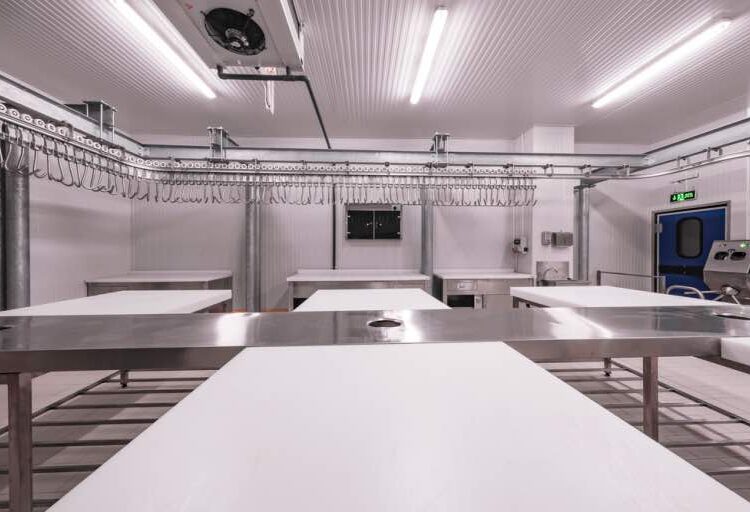In today’s world, food waste is a pressing issue that not only impacts businesses’ bottom lines but also contributes to environmental degradation. However, with the right tools and practices in place, businesses can mitigate food waste and optimise their operations. Let’s delve into how cold rooms play a crucial role in maximising shelf life, ultimately helping businesses save money and promote sustainability.
The Problem of Food Waste
Food waste is a significant challenge facing businesses across the globe. Shockingly, it’s estimated that approximately one-third of all food produced for human consumption is wasted each year. This wastage occurs at various stages of the food supply chain, from production and distribution to retail and consumption.
Not only does food waste strain businesses financially, but it also has profound environmental implications, including increased greenhouse gas emissions and resource depletion. Among the key factors contributing to food waste is improper storage, which can lead to premature spoilage and decay of perishable goods.
Understanding Cold Rooms
At the forefront of food preservation technology are cold rooms – specialised refrigerated spaces designed to maintain precise temperature and humidity levels for storing perishable items. Whether it’s fruits, vegetables, dairy products, or meats, cold rooms provide the ideal environment for extending the shelf life of a wide range of foods.
These rooms come in various sizes and configurations, ranging from small walk-in units to large-scale warehouses, catering to the diverse needs of businesses across different industries. There are also efficient emergency refrigeration services, which can save you a fortune when you need quick cold storage. By maintaining optimal conditions, cold rooms slow down the natural degradation process of food, keeping it fresh for longer periods.
The Role of Cold Rooms in Reducing Food Waste
Cold rooms play a pivotal role in reducing food waste by effectively extending the shelf life of perishable goods. The precise temperature control maintained within cold rooms inhibits the growth of bacteria and fungi, which are primary contributors to food spoilage.
This means that fruits, vegetables, meats, and other perishable items can remain fresh and safe for consumption for extended periods, reducing the likelihood of premature spoilage and waste. As a result, businesses can minimise losses due to spoilage and maximise the utilisation of their inventory, ultimately saving money and resources.
Strategies for Implementing Cold Room Solutions
To effectively integrate cold rooms into their operations, businesses can take several proactive steps. Firstly, conducting a thorough assessment of storage needs and capacity requirements is crucial for selecting the right type and size of cold room.
Collaborating with experienced cold room providers can offer valuable insights and customised solutions tailored to specific business needs. Furthermore, investing in staff training and education on cold room management and maintenance is essential for maximising efficiency and ensuring food safety.
How Long Can Food Be Left Out of the Fridge Before It Is Unsafe for Customers?
Imagine this scenario. Your refrigerator system breaks down out of the blue, and you’ve just opened your door to customers. You can feel the panic rising as orders are coming in, and you don’t know what you can do. How long can this food be left out of the fridge before you’re risking the health of your customers?
The answer is that it will depend on various factors. But, you need to be aware of them in order to make a safe decision for your business. Here’s what you need to know.
Consider the Perishability
First, you have to think about the type of food you’re taking out of the fridge. For example, if you have fruit like oranges and apples, they aren’t going to spoil within a few hours. In fact, as long as they’re whole, they can last several days. Even condiments like ketchup and honey can be stored at room temperature without any problems. However, the difference comes when you compare this to perishable goods.
Perishable goods include dairy products, meat, and cooked grains. These shouldn’t be left out of the fridge for over two hours. If the room is hotter than 32 degrees Celsius, you shouldn’t leave them out for more than 60 minutes. If you exceed this time, the products can experience bacterial growth, which can lead to making your customers sick. What’s more, you’re going to change the odor, appearance, and taste of the food, which isn’t going to be pleasant for anybody that consumes it.
Have an Emergency Plan
If you can’t get perishable goods into a refrigerated environment quickly, they’ll have to be thrown away. This will be like throwing money down the drain and cost businesses a lot. Therefore, it pays to create an emergency plan and have a cold storage company in mind when a disaster strikes. This way, you can quickly hire the equipment you need and transport everything from one fridge to another.
You’re protecting your finances and ensuring that you don’t make customers sick. Remember that if you doubt the freshness of any products, it’s best to be safe rather than sorry. Even if something doesn’t look spoiled, you have to think about how long it’s been out in the open.
Conclusion
Cold rooms are indispensable tools for businesses looking to reduce food waste and increase profitability. By providing the ideal environment for preserving perishable goods, cold rooms help businesses extend the shelf life of their inventory and minimise losses due to spoilage.
As businesses continue to prioritise sustainability and efficiency, investing in cold room technology offers a practical solution for addressing the global challenge of food waste. Let’s embrace the transformative potential of cold rooms and work towards a future where businesses can thrive while promoting environmental stewardship.




